The Pinto Mountain Goat Experience
26 juillet 2017 18:08 2 commentaires
Just North of Hinton is a special management area called Pinto Creek Canyon. The canyon is a stunning landmark, featuring Pinto Creek slowly and gently curving its way through the landscape, leaving behind scattered cliff faces and hoodoos along its banks. This is an area that West Fraser has rights to harvest around, but in anticipation of future harvest plans, the company is choosing to research the small population of Mountain Goats (Oreamnos americanus) that call this area home.
Here are some must-know facts about these creatures:
-
Female mountain goats are referred to as nannies, males are called billies, and this year’s offspring are called kids. A yearling is a goat that is 1-2 years old. It’s actually very difficult to sex a goat from far away. The billies tend to be a bit smaller than the nannies and there is slight curvature difference of the horns.
-
Nannies may not give birth every year, and if she doesn’t give birth one year, she will keep last year’s kid (now a yearling) by her side for another year.
-
One unique thing about the Pinto goats is that they are canyon-dwelling, not alpine or subalpine living like most other herds. Cliffs are critical habitat for goats because they are escape areas from predators (bears and cougars primarily). The cliffs also provide a valuable safe haven for a nanny to tend to her new young. Here, she and her kid are protected from predation and will enjoy the solitude for several weeks before the all the nannies and new kids rejoin the herd.
-
A Mountain Goats skeleton is arranged so that all four hooves can fit on a cliff edge as small as 5cm wide and 15cm long. They are also the only mammal with hooves that can move like toes to grab on to the cliff edges.
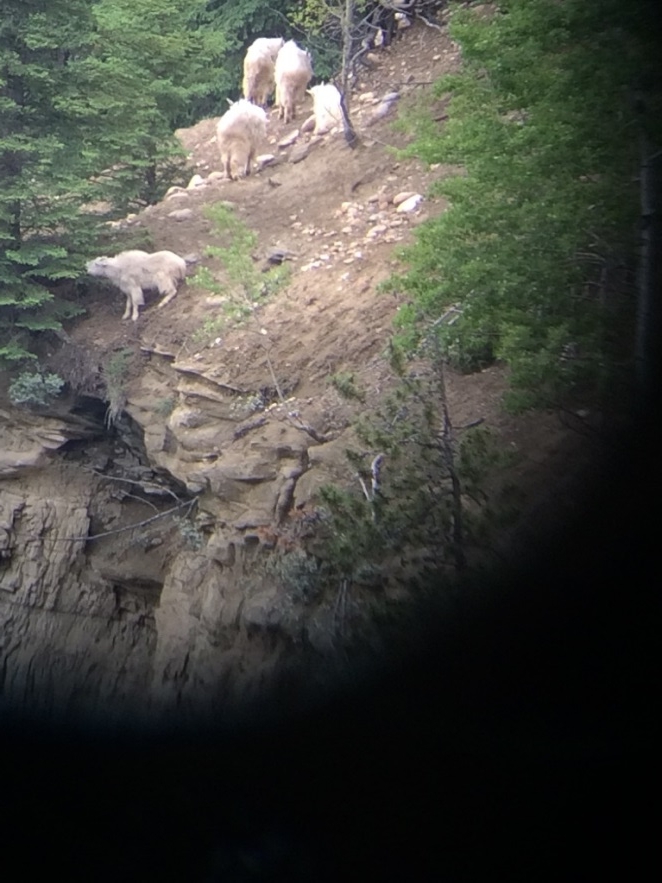
Image 4. A young goat nibbling on the fresh spruce tips, mastering the challenge of feeding on the cliffs!
This population of goats has been studied through various research projects since 1998. The purpose of the current research, which has been ongoing since 2008, is to understand the effects of disturbance (forest harvesting). Another important topic of research is understanding the isolation of the population and its connectivity to other populations, specifically the populations in Jasper National Park. These ground surveys include visual surveying to track the number of nannies and kids each year, as well as pellet (scat) counting and hair sample collection.
Laura and I spent four days at the end of June and beginning of July hiking the canyon, conducting the 2017 surveys. With all those cliffs and steep slopes, it sure makes for some tough, long days, but we were highly rewarded with some beautiful sightings of goats. Thanks to the awesome Vortex scope that Hinton Wood Products purchased for the biology department, I have some close-up images to share of the goats we saw!
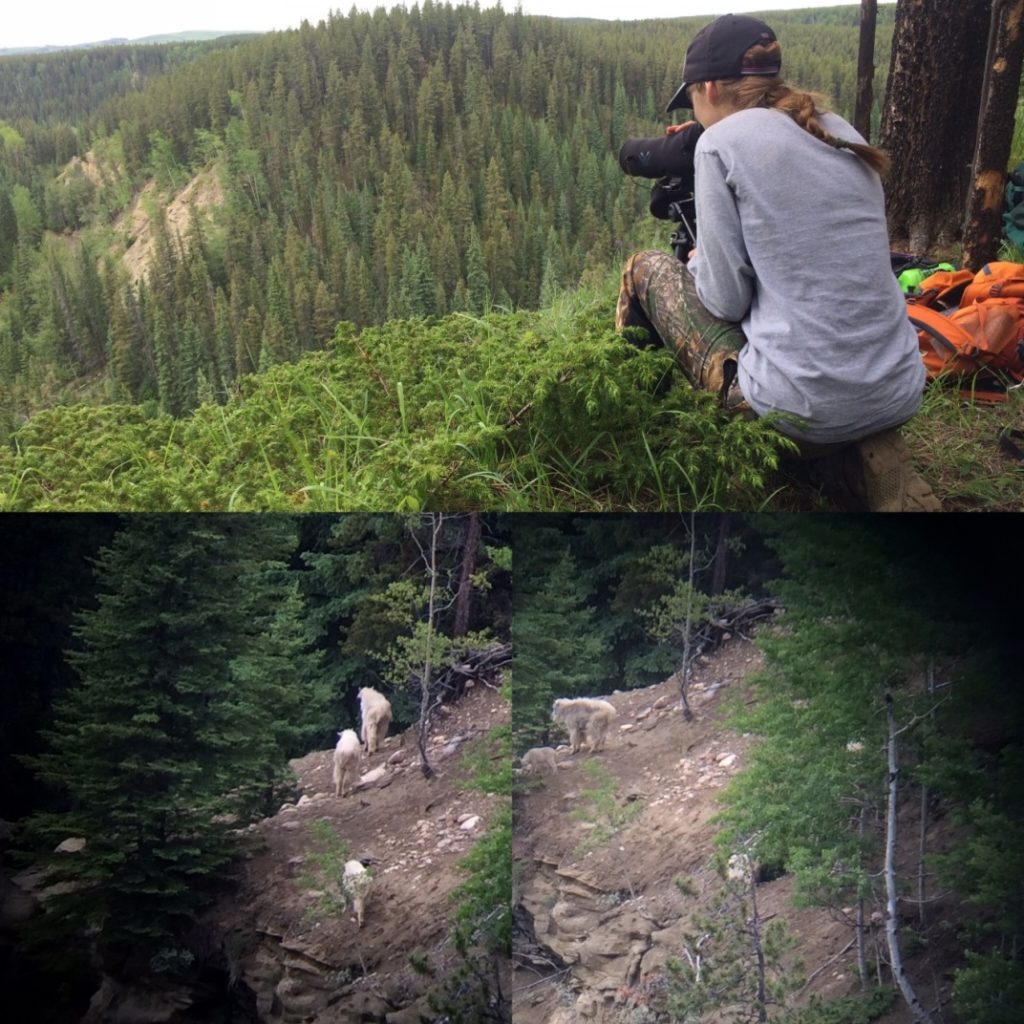
Image 6. Using our awesome scope to check out a herd on the first day of surveying. The two lower pictures were taken through the scope of the same view I’m looking at pictured above.
I want to share my experiences from my favourite day, even though they were all pretty great. It was the third day of surveying that Laura and I ended up hiking a solid 8 kilometers in +25C weather to survey 6 cliffs in the east portion of the canyon. The entire morning and early afternoon were spent hiking through the beautiful old growth open pine stands along a rocky cliff edge.
We view one, two, three, four cliffs, all magnificently carved by nature, but with no goats to see. As we came to the last cliff of the day, we scoured the face with our binoculars from afar, just to have the red, jagged rock stare right back. Just as we were about to sit down for a lunch break we spotted movement! Up the cliff face hopped two little white speckles from the treeline. There they were! Two shaggy mountain goats – one nanny and one yearling! They settled into a shady rock crevasse to escape the heat, but kept staring intently down the cliff face. Laura pointed out the behaviour to me that it appeared they were looking down to more goats on the way up. She was sure right, and up popped two more goats, a nanny and a kid! Laura and I had the spotting scope set up by this time, and spent a while viewing the small herd.
We settled at the view point to eat our lunches while watching the goats. Although it was getting late in the day, and we were still about an hour and a half walk to the truck, we decided to cross down a gully and view the cliff from the bottom of the river. What a treat. We were able to view the herd, which had now grown visually to 8 goats at a safe distance that I still found incredibly personal and intimate. We only viewed for a few minutes before the goats became a bit cautious of us, so we left the area to make sure to keep the encounter as stress-free for the goats as possible. We headed back towards the truck via the meandering river bank, and couldn’t help ourselves from going for a quick swim in the Pinto River to top off the perfect day!
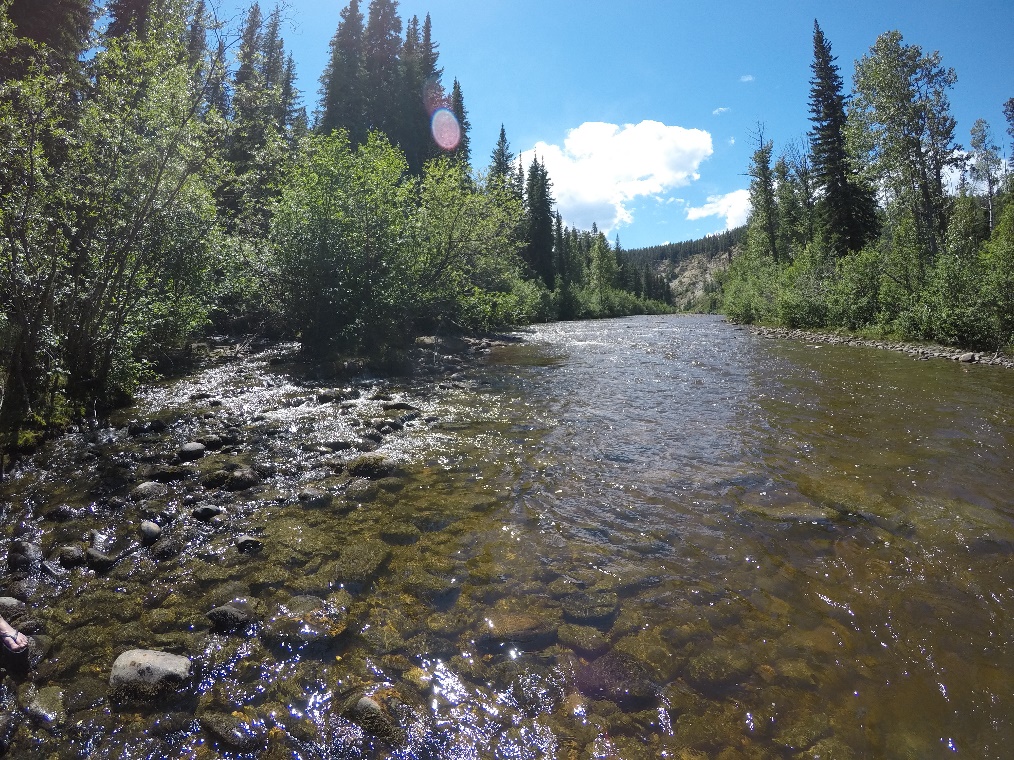
Image 9. Stopping for a swim in Pinto Creek! The cliff face you can see in the back has a herd of goats scattered across its face.


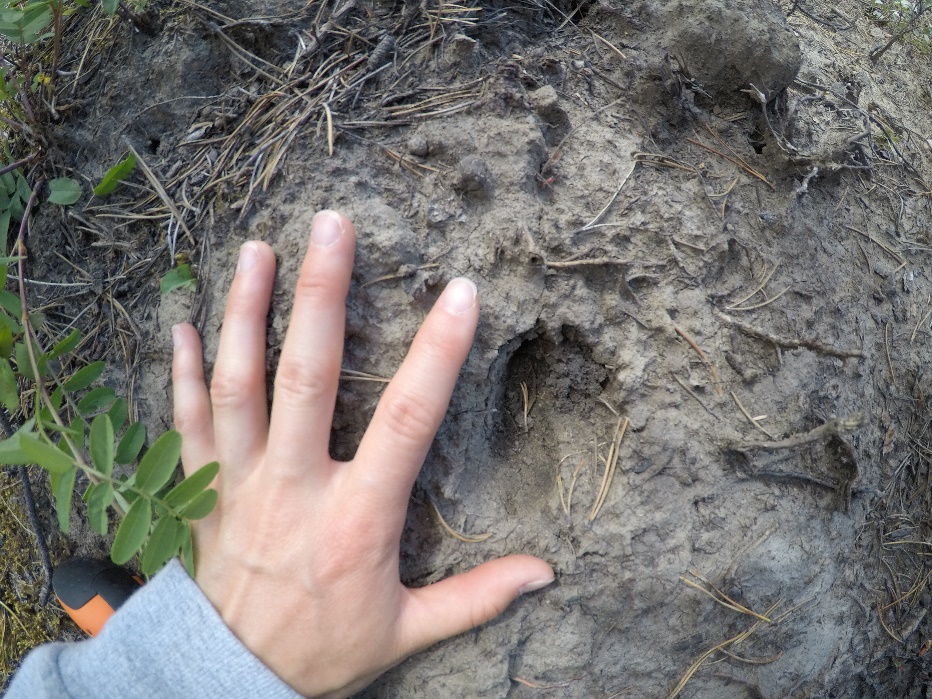
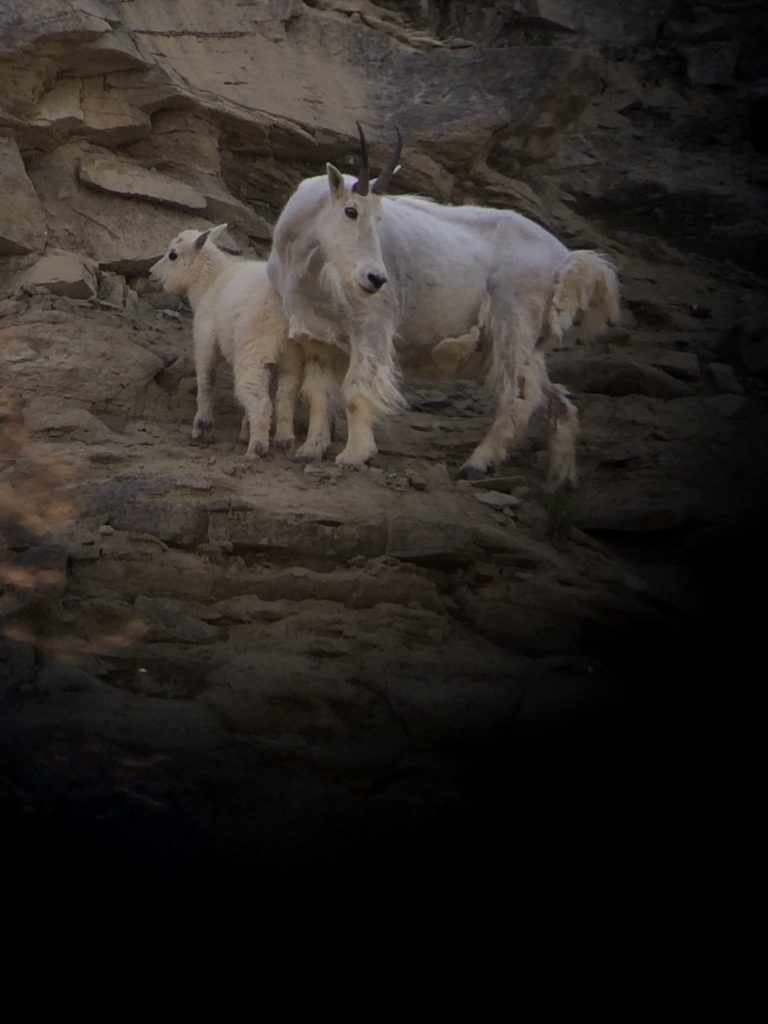
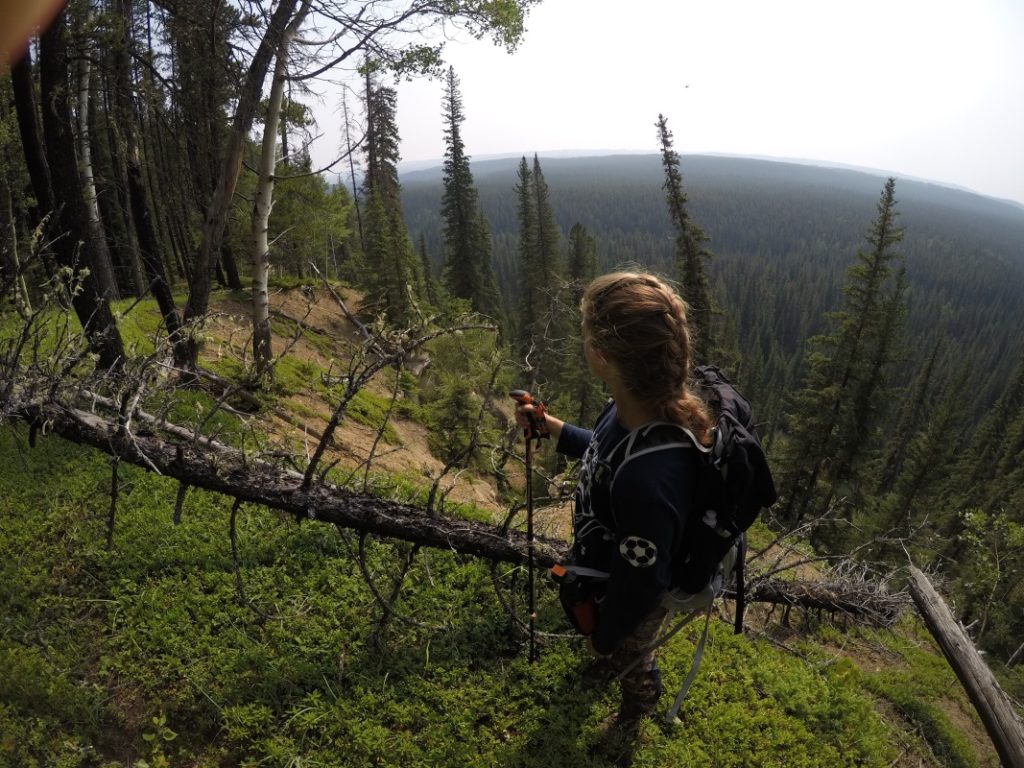
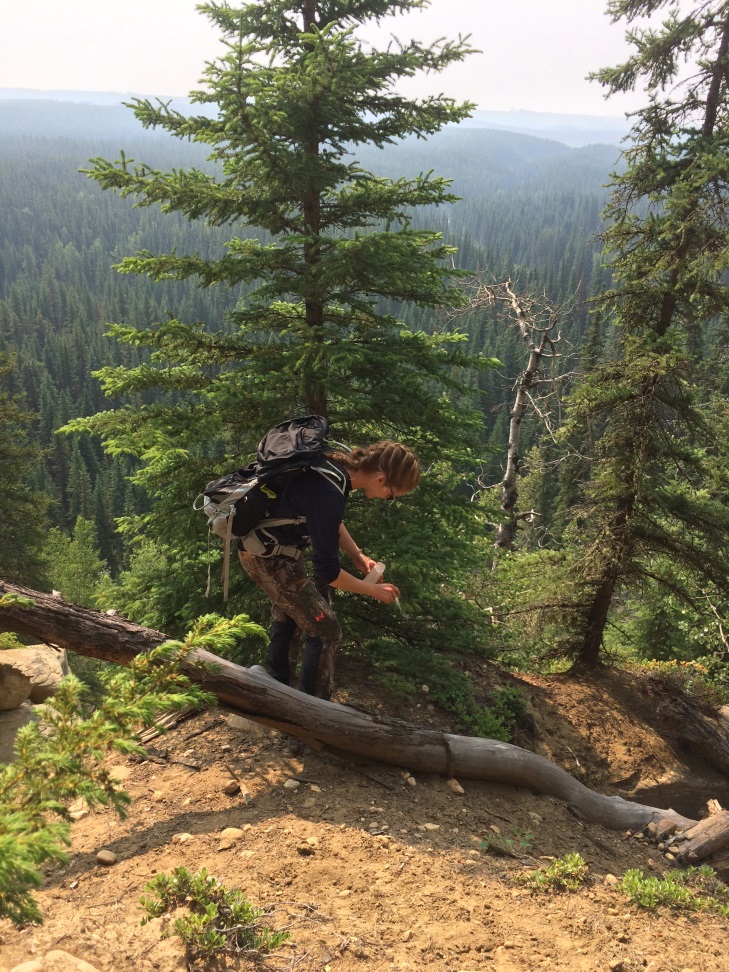
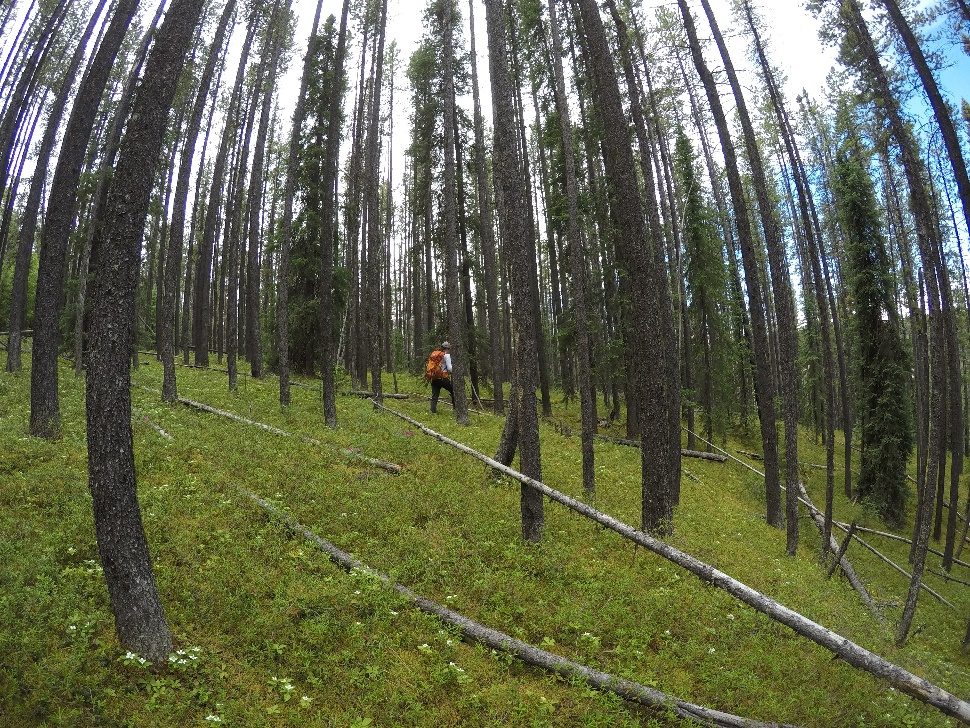

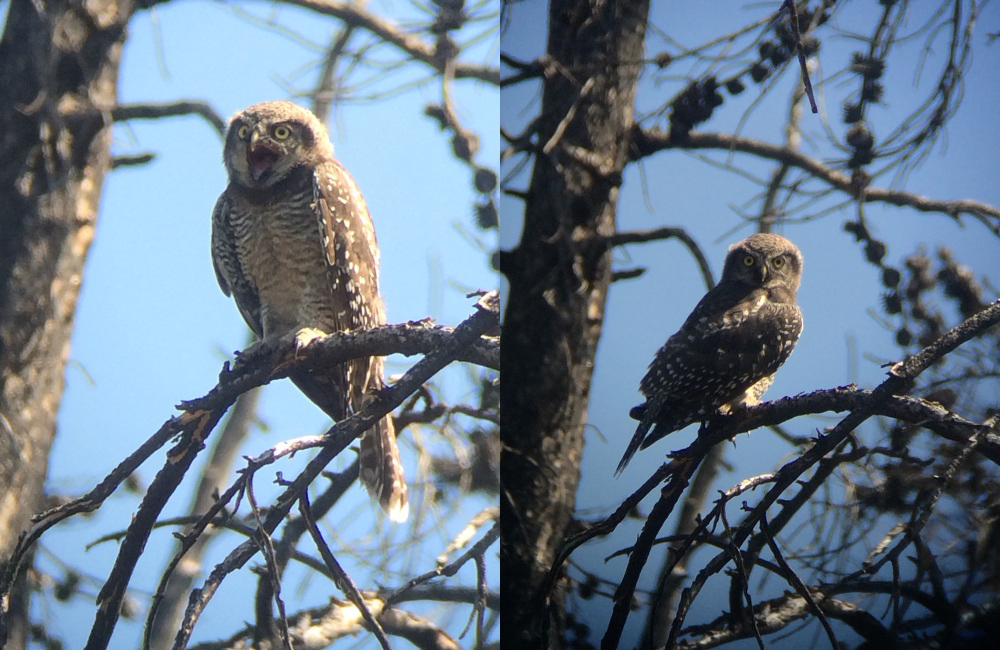
2 commentaires
Cool pics =D
Is the final goat tally for the year up/down/par for previous surveys?
PS – any chance Biology won’t be needing that scope from , say, September to December?
Just asking.
For a friend.
Really.
Awesome work you are doing. Nice smiles